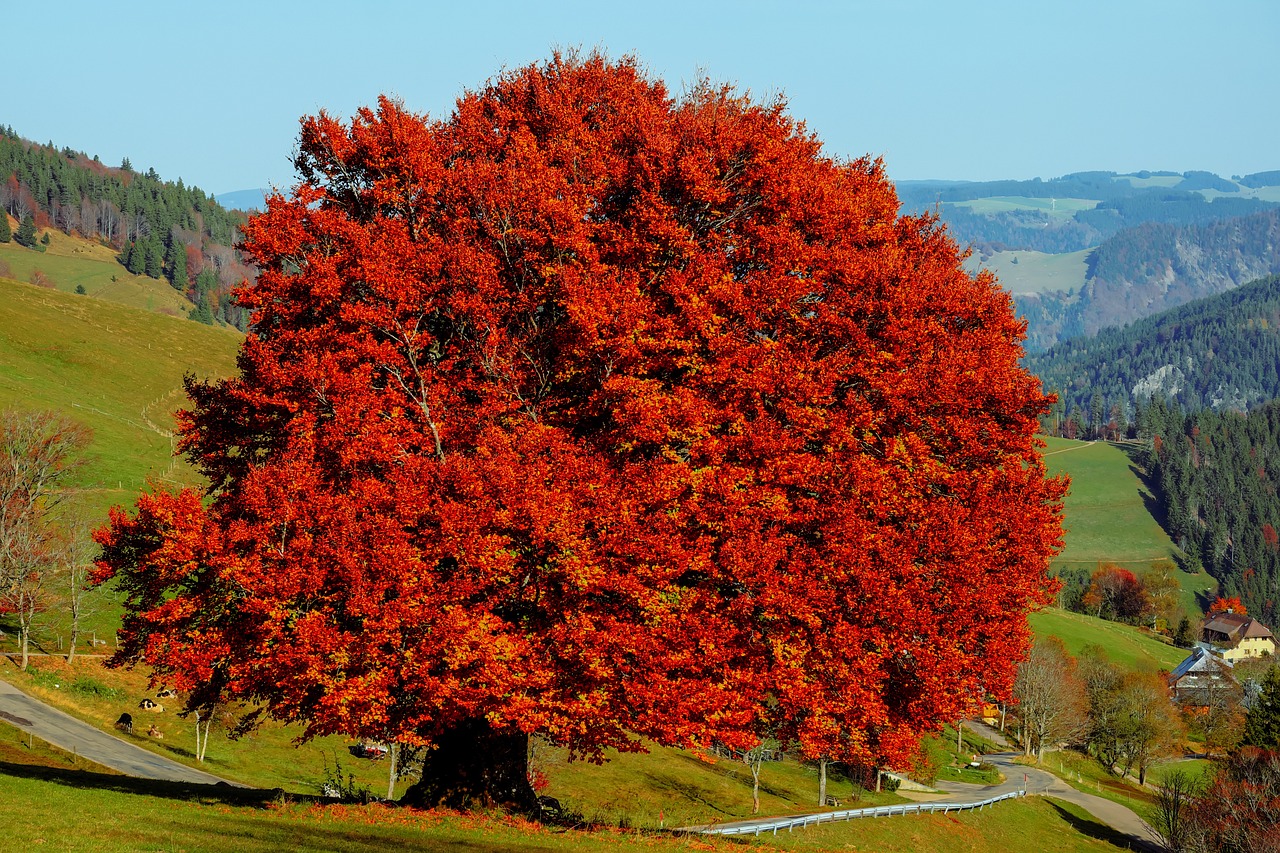Beech wood
Contents |
[edit] Introduction
The Common Beech (fagus sylvatica) is only considered a native tree to southern England and Wales. It grows in woods or as single trees, usually on drier, free-draining soil such as chalk downs or acidic soils, seeking water.
Beech woodland is shady with dense fallen leaves and mast husks preventing most plants from growing. The beech carries a shade wider than most, except holly (ilex spp) or yew (taxus spp) but can grow under other trees. Only shade-tolerant plants can survive beneath a beech canopy, Its smooth, silvery trunk can be beautiful.
The tallest recorded beech tree in England is 150ft and beech can reach 20 feet around at their stem. the average life span is around 250 years, with the oldest said to be over 320 years old. It can host a large number of wood decay fungi, pests and diseases meaning mature trees can die quite quickly if infected.
It is seen as a feminine tree, the queen, where oak is king. In Celtic mythology, Fagus was the god of beech trees, thought to have medicinal properties leaves were boiled to help relieve swelling. Forked beech twigs are also traditionally used for divining.
[edit] Wildlife
It is monoecious, which means both male and female flowers grow on the same tree, tassel-like male catkins hang from long stalks at the end of twigs, while female flowers grow in pairs, surrounded by a cup. Once wind pollinated the cup, contains one or two beech nuts (known as beechmast).
Beech woodland is an important habitat for butterflies, and food for the caterpillars. Seeds are eaten by mice, voles, squirrels and birds. Native truffle fungi also grow beneath these trees which help obtain nutrients in exchange for sugars from the tree (ectomycorrhizal)
[edit] Uses
Beech trees can be pollarded or coppiced, the wood traditionally being used to manufacture furniture as well as flooring, veneers, boatbuilding, cabinets, plywoods, piano parts and other musical instruments. It is a hard and strong wood but cannot withstand moisture, so it is not durable externally and is mostly used for interiors. In the UK, traditionally the bodgers of the Chilterns pollarded greenwood beech, using the craft of wood turning on site to form slim furniture legs which were then sold to the local furniture manufacturers in the area.
[edit] Specification
- Common Name(s): European beech, common beech
- Scientific Name: Fagus sylvatica
- Distribution: Europe
- Tree Size: 100-130 ft (30-40 m) tall, 3-5 ft (1-1.5 m) trunk diameter
- Average Dried Weight: 44.3 lbs/ft3 (710 kg/m3)
- Specific Gravity (Basic, 12% MC): 0.53, 0.71
- Janka Hardness: 1,450 lbf (6,460 N)
- Modulus of Rupture: 15,970 lbf/in2 (110.1 MPa)
- Elastic Modulus: 2,075,000 lbf/in2 (14.31 GPa)
[edit] Related articles on Designing Buildings
- A guide to the use of urban timber FB 50.
- Birch wood.
- Carpentry.
- Cedar.
- Forest Stewardship Council.
- Hardwood.
- Lime wood.
- Programme for the Endorsement of Forest Certification
- Softwood.
- Timber vs wood.
- Types of timber.
[edit] External Links
Featured articles and news
Latest Build UK Building Safety Regime explainer published
Key elements in one short, now updated document.
UKGBC launch the UK Climate Resilience Roadmap
First guidance of its kind on direct climate impacts for the built environment and how it can adapt.
CLC Health, Safety and Wellbeing Strategy 2025
Launched by the Minister for Industry to look at fatalities on site, improving mental health and other issues.
One of the most impressive Victorian architects. Book review.
Common Assessment Standard now with building safety
New CAS update now includes mandatory building safety questions.
RTPI leader to become new CIOB Chief Executive Officer
Dr Victoria Hills MRTPI, FICE to take over after Caroline Gumble’s departure.
Social and affordable housing, a long term plan for delivery
The “Delivering a Decade of Renewal for Social and Affordable Housing” strategy sets out future path.
A change to adoptive architecture
Effects of global weather warming on architectural detailing, material choice and human interaction.
The proposed publicly owned and backed subsidiary of Homes England, to facilitate new homes.
How big is the problem and what can we do to mitigate the effects?
Overheating guidance and tools for building designers
A number of cool guides to help with the heat.
The UK's Modern Industrial Strategy: A 10 year plan
Previous consultation criticism, current key elements and general support with some persisting reservations.
Building Safety Regulator reforms
New roles, new staff and a new fast track service pave the way for a single construction regulator.
Architectural Technologist CPDs and Communications
CIAT CPD… and how you can do it!
Cooling centres and cool spaces
Managing extreme heat in cities by directing the public to places for heat stress relief and water sources.
Winter gardens: A brief history and warm variations
Extending the season with glass in different forms and terms.
Restoring Great Yarmouth's Winter Gardens
Transforming one of the least sustainable constructions imaginable.























